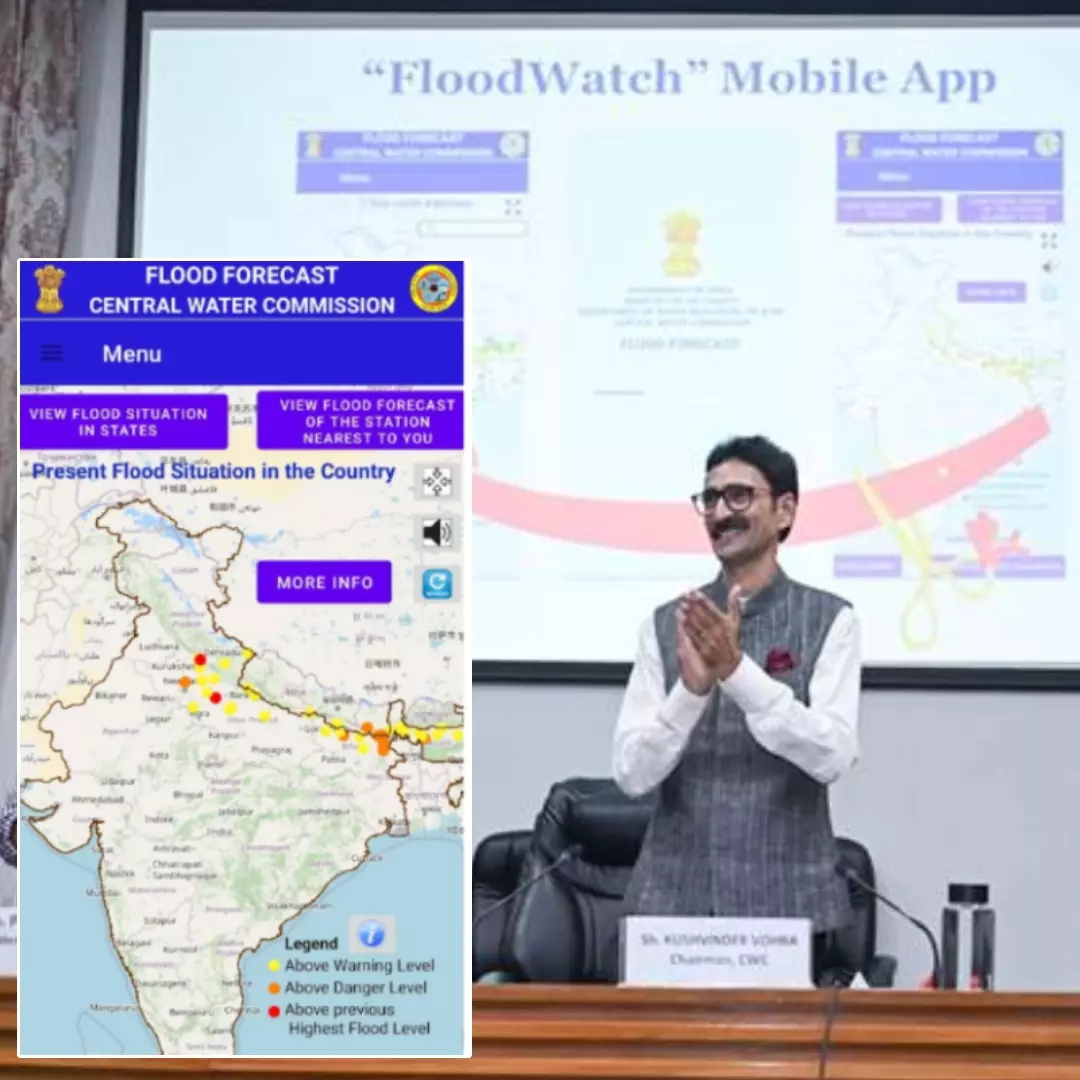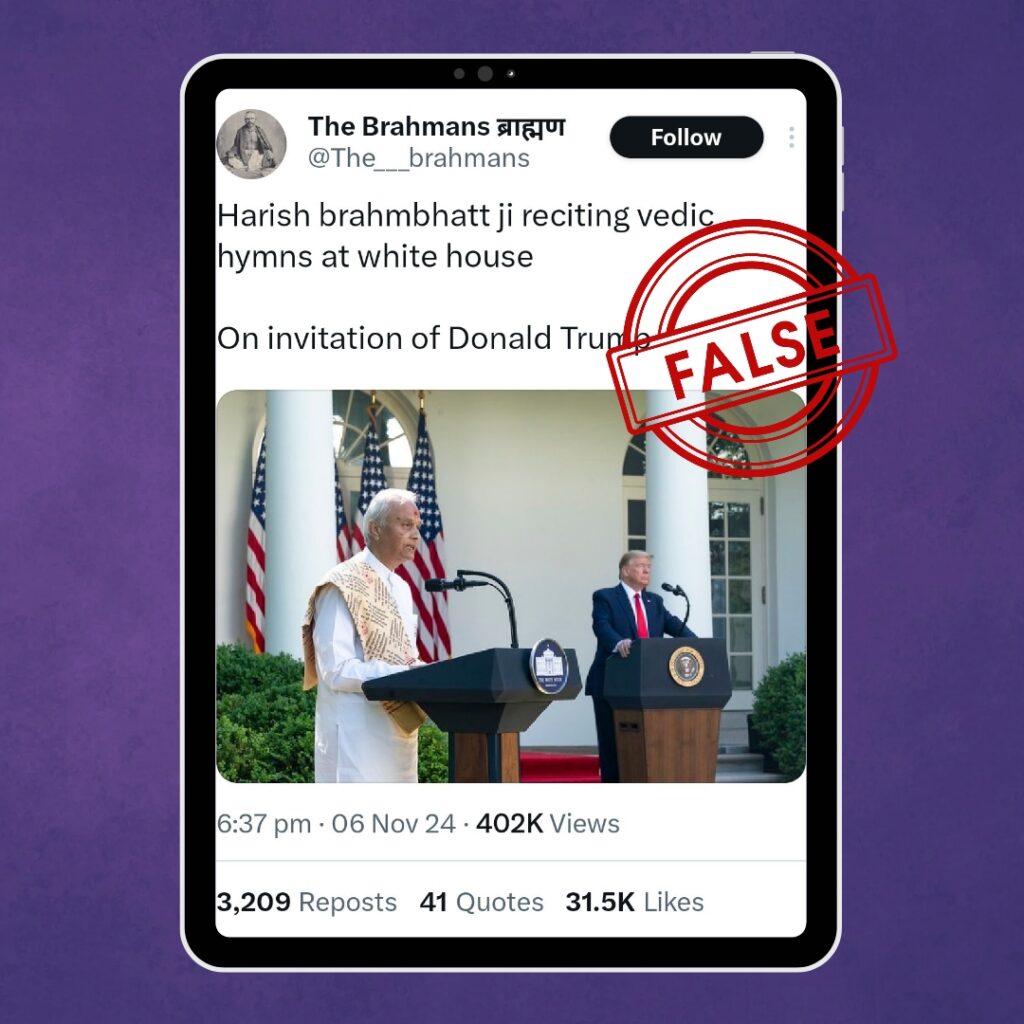The Central Water Commission has introduced its newly developed mobile application, “FloodWatch,” designed to provide real-time flood forecasts for the upcoming seven days. The app was officially launched by Kushvinder Vohra, the Chairman of the Central Water Commission, in New Delhi.
“FloodWatch” offers users comprehensive information about flood situations nationwide, presenting an easy-to-use interface that enhances awareness and reduces risks during flood occurrences.
It’s important to note that the app currently bases its forecasts on 328 out of 1543 flood monitoring points spanning across 24 river basins. These monitoring points gauge water levels of rivers, reservoirs, and canals on an hourly basis.
The app’s goal is to eventually encompass all flood monitoring points by the end of this year. By utilizing the ubiquity of mobile phones, the app intends to efficiently disseminate real-time flood-related information and forecasts for up to 7 days.
According to an ex-officio Secretary to the Government of India, these forecasts are crucial for informed decisions regarding water distribution and predictions of flood and drought risks. The bilingual app is accessible for download on Android devices, making it widely available to users around the world, as per a report in The New Indian Express.
The selection of current monitoring points has been a collaborative effort with state governments, predominantly focusing on areas with human settlements. The app employs advanced technologies such as satellite data analysis, mathematical modeling, and continuous monitoring to deliver accurate and timely flood forecasts.
Chairman of Central Water Commission Kushvinder Vohra launches Mobile App ‘Floodwatch’ to provide real-time flood forecasts to public using interactive maps
➡️ Key feature of the app includes real-time flood monitoring where users can check up-to-date flood situation throughout… pic.twitter.com/jlh2SATBud
— PIB India (@PIB_India) August 17, 2023
India’s flood monitoring system has been subject to criticism for some time. Despite having around 400 rivers and seven major river systems spanning over 200,000 km, the number of flood monitoring points is insufficient for a comprehensive situational assessment.
Notably, the app’s launch aims to address gaps in the current flood forecasting mechanisms. A senior official highlighted the case of Delhi’s recent floods as an example, where timely assessment and forecasting were hindered. The Yamuna River in the national capital reached a record-breaking level, causing widespread flooding and disruptions to daily life.
Kushvinder Vohra emphasized that the “FloodWatch” mobile application will contribute to bridging these gaps in flood forecasting within the country.
Floods In Punjab
Recent heavy rains and the release of excess water from the Bhakra and Pong dams have resulted in significant flooding in the Gurdaspur, Rupnagar, and Hoshiarpur districts of Punjab. Rising water levels in the Beas and Sutlej rivers, triggered by the dam releases, have led to the inundation of large portions of these areas.
The Bhakra Dam on the Sutlej River and the Pong Dam on the Beas River, both located in Himachal Pradesh, are experiencing high water levels due to heavy rainfall in their respective catchment zones.
As a result, numerous individuals residing in low-lying regions and riverside villages have been evacuated to safer locations. District authorities are urging people in affected areas to move to higher ground for their safety, reported India Today.
Local administrations in Gurdaspur and Rupnagar have announced school closures in flood-hit villages until further notice. Relief camps have been established, and helplines are available for affected individuals. Efforts are underway to plug breaches along the rivers, and teams from the National Disaster Response Force (NDRF) and the State Disaster Response Force (SDRF) have been deployed for rescue operations.
Despite the challenges, villagers have displayed resilience by using tractor-trolleys to transport stranded individuals to safety and provide essential supplies. Some villagers are also refusing to leave their homes, instead opting to relocate to upper floors, prompting authorities to provide them with food and dry ration.
Punjab Minister Kuldeep Singh Dhaliwal visited flood-affected areas near the Beas and reported that rescue operations are ongoing with the assistance of the NDRF, Army, and the Border Security Force (BSF). Gurdaspur Deputy Commissioner Himanshu Aggarwal confirmed the evacuation of 125 people and the deployment of 15 boats for rescue efforts.
The district administration is urging residents of affected areas to cooperate with rescue teams and to use helplines if needed. Despite the challenges, authorities are prepared to handle the situation and are encouraging people not to panic.
Also Read: Mumbai Becomes India’s Most Expensive City To Live In, Ahmedabad Most Affordable
https://thelogicalindian.com/h-upload/2023/08/18/500x300_232900-web-52-2.webp
Trending
2023-08-18 11:51:56.0
CWC Launches ‘Floodwatch’ Mobile App To Provide Flood Forecasts











